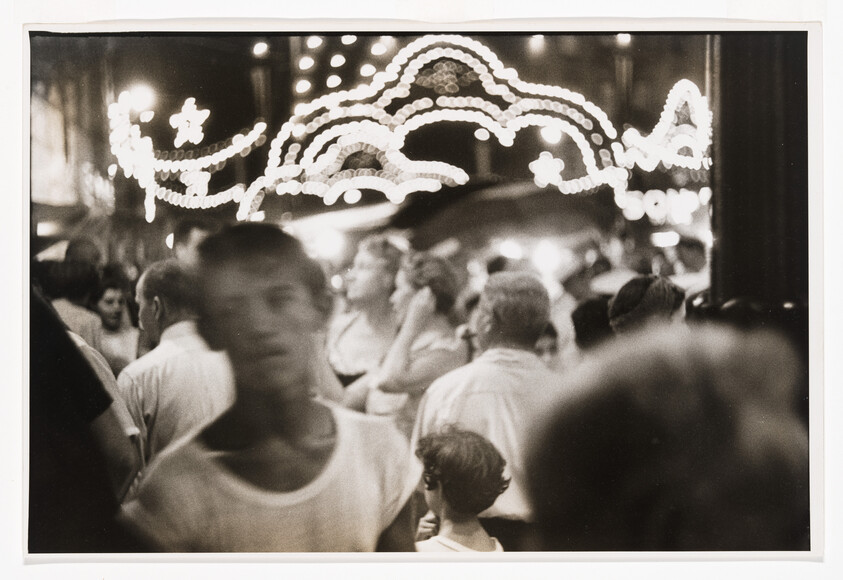Vik Muniz
Picture of Dust (Barry Le Va, Continuous and Related Activities; Discontinued by the Act of Dropping, 1967, Installed at the Whitney Museum in "New Sculpture 1965-75: Between Geometry and Gesture," February 20-June 3, 1990)
2000
This work, like others in the series to which it belongs, has its basis in an unorthodox material: dust that was gathered from the Whitney Museum’s galleries and offices and delivered to Vik Muniz in vacuum bags. Muniz used the dust to make drawings of installation photographs of iconic Minimalist and Post-Minimalist artworks in the Museum’s collection. He then photographed and enlarged his dust drawings, resulting in works such as this twelve-foot diptych showing an important “scatter” piece by Barry Le Va. A fascinating disconnect occurs between Pictures of Dust and its source. Le Va’s Postminimalist work accentuates the specific physical properties of its material components: felt and glass. Dust, by contrast, is a transient, diffuse residue of disintegrated materials; it refers to nothing in particular. As a reproduction of a reproduction, Pictures of Dust, like Muniz’s other photographs, also questions the notion of artistic originality so prized by modernism. In creating images that are several times removed from their real world subjects, Muniz redefines our ideas about what constitutes a unique object and leads us to ask whether we can really believe what we see.
Not on view
Date
2000
Classification
Photographs
Medium
Two silver dye bleach prints (Ilfochrome)
Dimensions
Overall: 51 × 130 1/2 in. (129.5 × 331.5 cm)
Frame: 51 1/8 × 65 1/8 × 2 in. (129.9 × 165.4 × 5.1 cm)
Accession number
2001.158a-b
Edition
4/5
Credit line
Purchase, with funds from the Photography Committee and Kathryn Fleck
Rights and reproductions
© Vik Muniz / Licensed by VAGA at Artists Rights Society (ARS), New York

